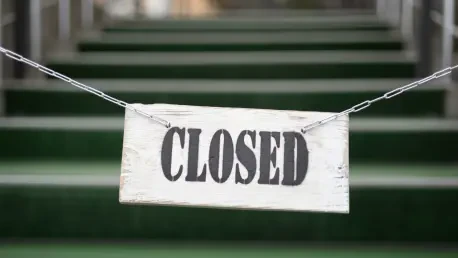As the possibility of a government shutdown casts a shadow over the nation, millions of American workers stand at a precarious crossroads, uncertain if the agencies tasked with their protection will remain operational, while political gridlock in Washington once again raises the specter of funding delays. This threatens to disrupt the vital work of entities like the Occupational Safety and Health Administration (OSHA), the Mine Safety and Health Administration (MSHA), and the National Institute for Occupational Safety and Health (NIOSH). These organizations are the backbone of workplace safety, ensuring that employees—from factory floors to hospital corridors—can perform their duties without fear of preventable harm. Yet, with budget disputes looming, their ability to conduct inspections, enforce standards, and develop protective measures hangs in the balance. A coalition of prominent safety organizations has issued an urgent plea to Congress and the White House, demanding uninterrupted funding to safeguard the workforce. This pressing issue transcends mere politics; it strikes at the core of a fundamental right to a safe working environment. The question now is whether lawmakers can bridge partisan divides to prevent a crisis that could endanger lives across countless industries. This article delves into the critical roles of these safety agencies, the tangible risks posed by shutdowns, the unified stance of safety advocates, the push for bipartisan action, and the sweeping impact on diverse sectors.
The Cornerstone of Workplace Safety
The foundation of worker protection in the United States rests on the shoulders of agencies like OSHA, MSHA, and NIOSH, which collectively shield millions from workplace hazards every day. These entities are not mere bureaucratic bodies; they are active guardians that set safety standards, conduct rigorous inspections, and certify essential protective equipment. Whether it’s a welder on a construction site or a nurse in a busy emergency room, the guidelines and oversight provided by these agencies help mitigate risks that could otherwise lead to injury or death. Their work has been instrumental in driving down workplace fatalities over decades, a testament to the importance of their continuous operation. However, any disruption in funding threatens to unravel this hard-earned progress, leaving workers exposed to dangers that could easily be prevented with proper enforcement and resources.
Beyond establishing rules, these agencies serve as critical responders in the face of workplace incidents, investigating accidents to prevent future occurrences and developing new protocols to address emerging threats. Their role extends into research and training, equipping industries with the knowledge to handle modern challenges like chemical exposures or ergonomic hazards. A funding lapse would not only halt inspections but also stall vital research and delay the implementation of updated safety measures. For workers in high-risk environments, such as mining or manufacturing, this could mean the difference between a safe shift and a catastrophic event. The safety community’s concern is not abstract; it’s rooted in the reality that without these agencies functioning at full capacity, the safety net beneath the workforce weakens significantly.
Shutdowns as a Safety Hazard
Government shutdowns represent far more than political posturing; they pose a direct and immediate threat to the safety of workers across the nation by crippling the operations of essential agencies. When funding dries up, OSHA cannot conduct workplace inspections, MSHA is unable to monitor hazardous mine conditions, and NIOSH must pause critical research into occupational health risks. The safety coalition has delivered a stark message to lawmakers, emphasizing that halting government operations does not equate to safer workplaces. For many essential workers, from firefighters to factory hands, this isn’t a theoretical issue but a daily reality where the absence of oversight could lead to life-altering injuries or worse. The potential for such disruptions underscores the urgency of maintaining consistent financial support for these protective bodies.
Historical precedents paint a grim picture of the consequences tied to funding interruptions, with past shutdowns resulting in delayed responses to safety violations and unaddressed hazards piling up. Each missed inspection or postponed standard update represents a gap in protection that employers might exploit, whether intentionally or not, leaving workers vulnerable to preventable risks. The impact is particularly acute in industries where danger is inherent, such as construction or oil extraction, where a single oversight can trigger devastating outcomes. The safety community’s warning is clear: allowing political disputes to interrupt agency functions creates a domino effect, endangering not just individual workers but entire sectors reliant on stringent safety enforcement. This threat demands attention before it manifests into real-world tragedies.
A Collective Demand for Action
A formidable alliance of safety advocates, including the International Safety Equipment Association (ISEA), National Safety Council (NSC), American Industrial Hygiene Association (AIHA), and American Society of Safety Professionals (ASSP), has united to demand that worker protections remain intact amid fiscal uncertainties. Their joint statement carries a weight of urgency, asserting that the safety of employees must never be treated as a negotiable item in budget disputes. ISEA President Cam Mackey’s pointed remark that “worker safety cannot wait” encapsulates the coalition’s resolute stance, reflecting a deep concern for the millions who depend on robust safety measures to perform their jobs. This collective voice is a powerful reminder of the stakes involved, pushing for immediate and decisive action from those in power.
This unified front serves a dual purpose: it not only raises public awareness of the risks tied to shutdowns but also applies strategic pressure on policymakers to prioritize funding for safety agencies. By banding together, these organizations amplify their influence, making it difficult for Congress to overlook the human cost of inaction. Their message resonates beyond boardrooms and legislative halls, reaching the workers themselves—those on oil rigs, in warehouses, and at hospital bedsides—who rely on these protections daily. The coalition’s effort is a calculated move to shift the narrative, framing workplace safety as an undeniable right rather than a partisan issue. Their advocacy highlights the need for a solution that transcends political divides, ensuring that the machinery of safety remains operational no matter the fiscal climate.
Bridging Partisan Divides for Worker Welfare
At the heart of the safety community’s urgent appeal lies a call for bipartisan cooperation, urging lawmakers to set aside political differences and focus on the non-negotiable priority of protecting the workforce. Budget battles and policy disagreements should not be allowed to derail the essential functions of safety agencies, which serve as lifelines for employees in every corner of the economy. The coalition’s position is grounded in a fundamental belief that safeguarding human lives must remain above partisan squabbles, especially when the specter of a government shutdown threatens to disrupt critical oversight and enforcement activities. This plea for unity is not just idealistic; it’s a pragmatic demand for governance that puts people before politics.
The coalition has articulated a specific and actionable request to Congress: ensure the finalization of fiscal 2026 appropriations without any cuts to programs that support worker safety. This demand ties directly to an ethical imperative, emphasizing that the lives and well-being of workers should never become collateral damage in legislative gridlock. The challenge for lawmakers is to rise above entrenched divisions and recognize the universal importance of maintaining a functional safety infrastructure. Success in this endeavor would send a powerful message that worker protection is a shared value, worthy of unwavering commitment. The safety community’s push for bipartisan solutions serves as a reminder that effective governance requires compromise, especially when the stakes involve the health and safety of the nation’s labor force.
Ripple Effects Across Every Industry
The potential fallout from a government shutdown would not be confined to a single field; it would reverberate across every industry, endangering workers in diverse roles and environments. From roughnecks braving harsh conditions on oil fields to nurses navigating high-stress hospital settings, the absence of active safety oversight poses a universal threat. The safety community has stressed that no sector is immune to the consequences of disrupted funding for agencies like OSHA, MSHA, and NIOSH. A lapse in inspections or delayed safety protocols could expose vulnerabilities in workplaces nationwide, undermining a national commitment to protecting those who keep the economy running. This broad impact adds a layer of urgency to the call for uninterrupted agency operations.
Consider the varied scenarios where safety lapses could prove catastrophic: a construction worker without access to updated protective gear, a miner operating in an uninspected site, or a healthcare provider lacking current infection control guidelines. Each represents a unique but equally critical risk, highlighting how interconnected workplace safety is to the functioning of these federal bodies. The coalition’s message drives home the point that protecting workers isn’t a niche concern; it’s a foundational element of a functioning society. If funding falters, the consequences would touch every corner of the labor market, from industrial hubs to service sectors. Addressing this issue requires recognizing the shared responsibility to uphold safety standards, ensuring that no worker is left exposed due to political inaction.
Safeguarding the Future of Work
Reflecting on the intense advocacy efforts, it becomes evident that the coalition of safety organizations has mounted a compelling case to shield OSHA, MSHA, and NIOSH from the disruptions of government shutdowns. Their unified warnings about the dire consequences of funding lapses resonate across industries, spotlighting the real human cost of political inaction. Lawmakers face immense pressure to act, with the safety community’s call for bipartisan resolve echoing through legislative corridors. Moving forward, the focus must shift to actionable steps—securing fiscal 2026 appropriations without compromise and establishing safeguards to insulate safety programs from future budgetary disputes. Exploring legislative mechanisms to designate these agencies as essential services could prevent similar crises down the line. Additionally, fostering ongoing dialogue between safety advocates and policymakers might ensure that worker protection remains a priority, regardless of political tides. The path ahead demands not just reaction but proactive commitment to a safer working environment for all, reinforcing the principle that no job should come at the cost of a life.









